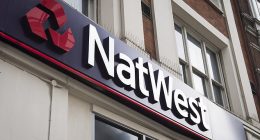
U.S. consumer prices ticked higher at the end of 2020, as Americans contended with higher gasoline and food costs along with a rise in coronavirus cases across the country.
The consumer-price index—which measures what consumers pay for everyday items including food, clothing and recreational activities—increased a seasonally adjusted 0.4% in December compared with November, the Labor Department said Wednesday.
Gasoline prices rose 8.4% over the month, accounting for more than 60% of the overall increase in prices, according to the Labor Department.
In the year ended December, prices were up 1.4%, on a non-seasonally adjusted basis, capping a year that saw muted inflation amid an economic downturn caused by the pandemic. The increase was the smallest yearly rise since 2015, the Labor Department said.
Economists surveyed by The Wall Street Journal were expecting a 0.4% rise in consumer prices over the month and a 1.3% increase over the year.









